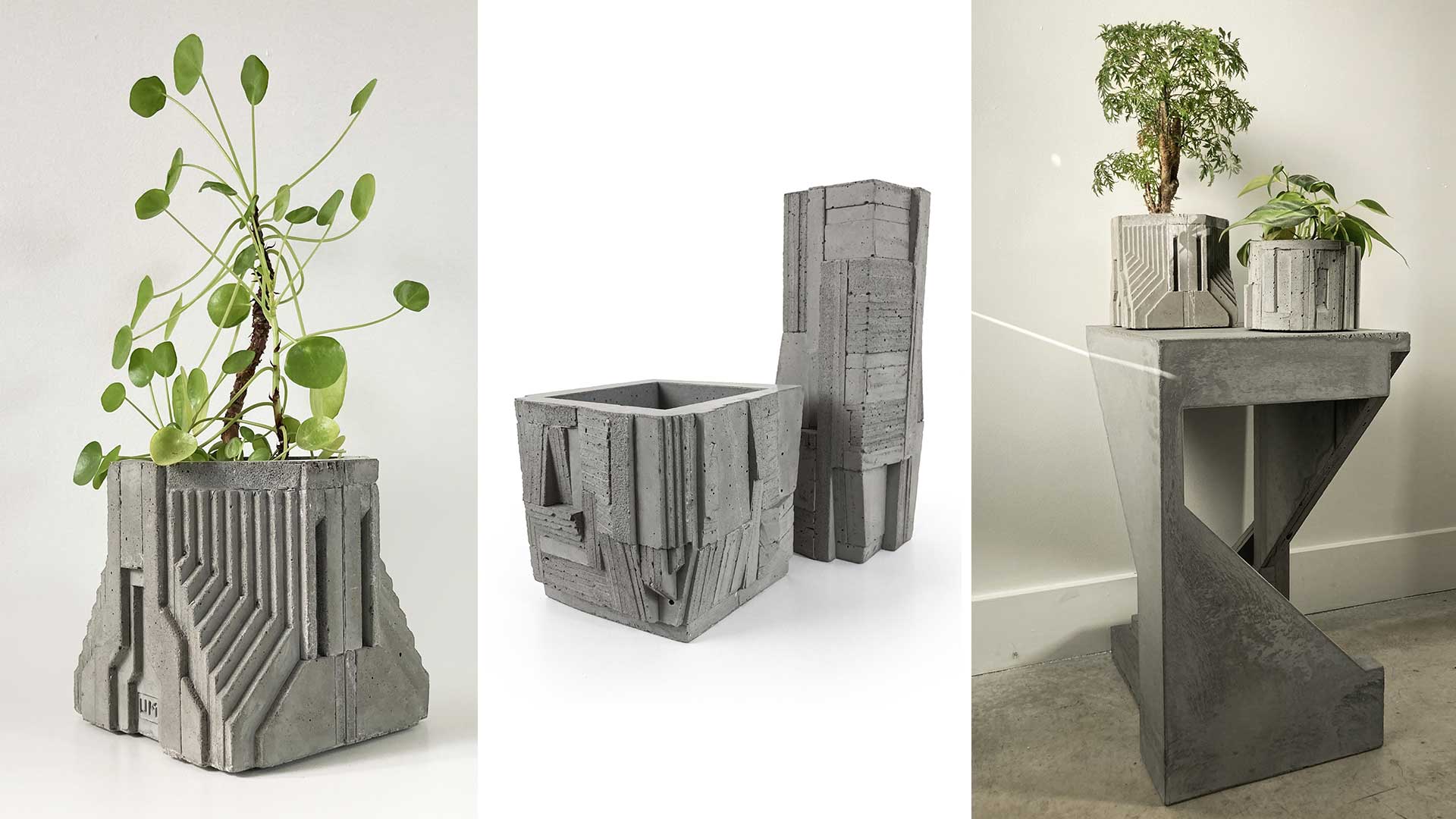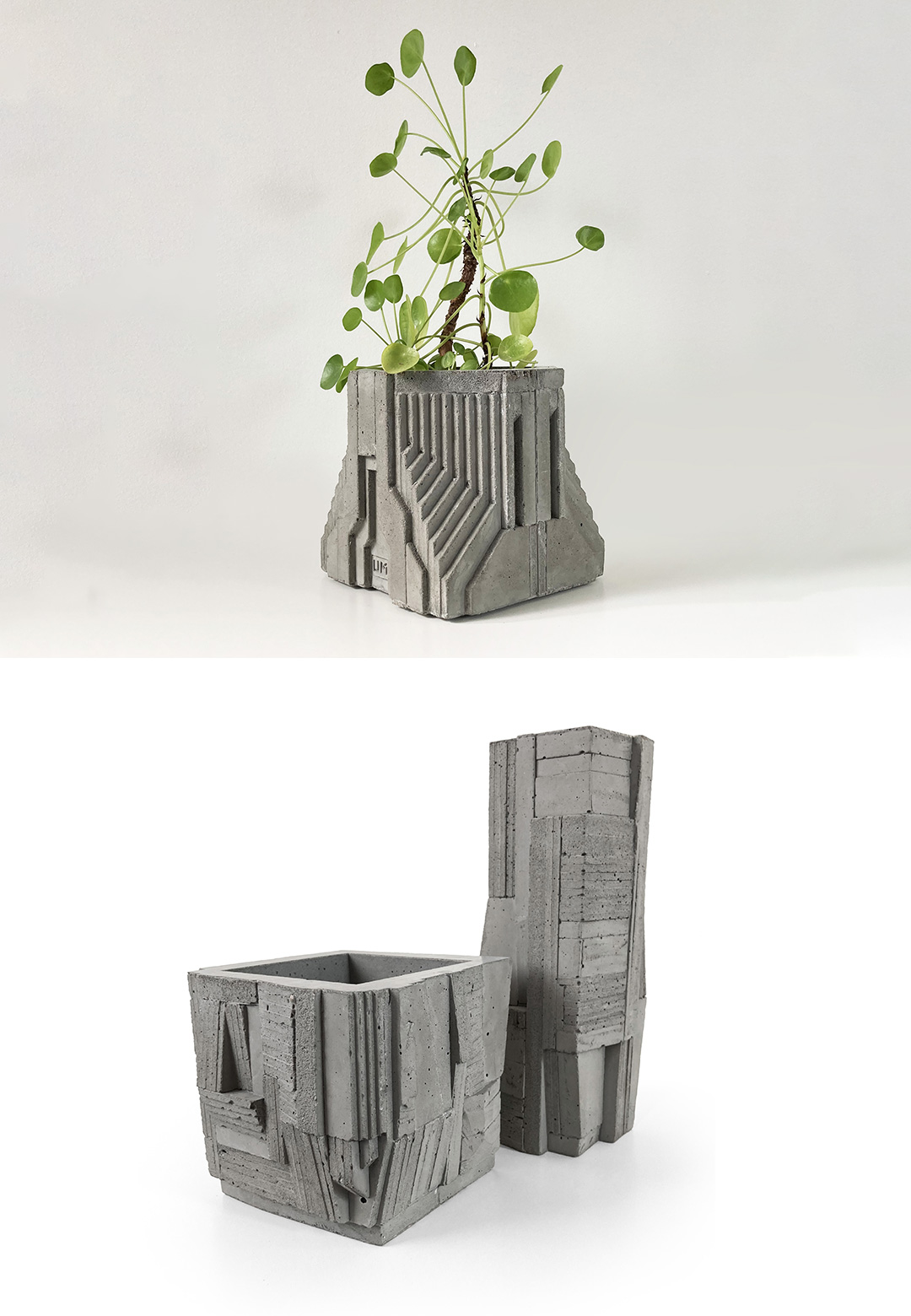Since time immemorial, homo sapiens stood out amidst a pool of other species with their superlative adaptability and an inimitable capacity to build. From humble huts and tents to towering skyscrapers and technological breakthroughs, humans evolved to construct at scales so large, with techniques so intricate, that these creations coalesced under the umbrella of the label ‘human-made’—something deemed dissimilar to the ‘natural,’ even unrelated. Notwithstanding this segregation, once the pall of time begins to shroud these ‘artificial’ structures, wearing the surfaces and corroding their layers, nature conquers. What was once a clear categorisation of natural versus human-made, fails to suffice; the structure conforms to none and both in tandem. This profound window of coexistence is where David Umemoto positions his art.
Based in Canada, Umemoto’s practice vacillates between architecture, sculptural art and design. The artist works primarily with concrete to create sculptures that emulate temporary buildings or monuments perched on faraway lands. He dexterously fashions concrete sculptures and functional art that abides by the calculative and normative approach intrinsic to architecture, yet alludes to certain artistic poetry. Amidst an oeuvre of exclusive editions, collectable designs and DIY projects, his series of concrete planters and vases strike an enticing dialogue with elements of nature, quite literally—culminating in a harmonious composition where one makes the other stand out. “In my art, I'm fascinated by how time and wear shape things, making it unclear if they're human-made or natural. My creations have simple shapes, but I add a lot of texture,” the Canadian artist says.
An architecture graduate, Umemoto channels his understanding of the vast practice—now infused in his methodology—into concrete silhouettes that tread the thin line between structures and sculptures. With nearly 15 years of experience in the rather rational sphere, it is only imminent for his art, however ‘spontaneous,’ to come down to codified precision. Upon his shift from architecture to art, Umemoto dabbled with plaster and then concrete, which led to the creation of his clique of architectural sculptures. Rationale infiltrates the largess usually associated with artistic endeavours, culminating in sculptural art with umpteen possibilities—much like a puzzle that awaits transformation and reconstruction.
When one looks at Umemoto’s work, a vague sense of familiarity comes into play, conveying numerous images in the mind. “They refer to the archaic and the ephemeral, despite the solidity and the modernity of the medium. Appearing before our eyes are pre-Columbian rock dwellings, god statues from the Andes or Easter Island, steles deteriorated by rain, remnants of modern cities having survived a cataclysm, fragments of Babylonian cities, colonial settlements brought down to their foundations, cenotaphs abandoned in the jungle,” reads the official artist statement. These ‘built’ structures then engage with nature, undergoing a metamorphosis. Hanging Gardens, one of Umemoto’s early works, explores the concoction of concrete and nature. “I made structures meant to hold plants, but over time, they lose control and get taken over by nature, like what happens in Las Pozas in Xilitla,” Umemoto shares. “The planters and vases I make follow the same idea, bringing together these different beauties to make each other stand out,” he adds.
The process of production Umemoto follows is one of slow and silent transformation. The creative process imitates the cycles of nature—erosion and re-creation. The lines and textures are in a constant state of flux owing to the doings of time and weather. The natural architectures of geological strata and crystals inspire the design of the moulds in which the concrete is cast. The ductile and adaptive nature of concrete allows for the production of objects that are both similar and different. The unaltered imperfections of concrete become a playground for light and shadows; the medium is almost unassuming allowing precision and durability.
“I try to keep the process very simple, using basic materials and tools. My idea is that I should be able to make my art anywhere with minimal needs,” the sculptural artist explains. “I also want to be able to adjust the design over time or be able to modify it if I get a special request. The versatility comes with the downside that the pieces are made in very small batches and are long to produce,” he adds. The work, despite being iterative, makes room for improvisation and adaptation. “The shapes created by Umemoto line up in sequences of combinatorial variations. Each work offers a different face but these faces all belong to the same lineage. This kinship gives a strong unity to Umemoto’s production and allows for the exploration of the theme of transformation through time and tradition,” the artist's statement reads.
All of Umemoto’s pieces are thoughtfully handcrafted to respect an economy of means. “I’m planning to expand the product line, adding a few more vases and planters specially made for bonsais. I’m also working on other small objects such as trays, candle holders and lamps,” he shares. In a relentless pursuit of technological improvement that defines contemporary times, Umemoto responds by taking a step backwards. In a manual methodology that is manual, the artistic practice is simplified, while aesthetics and formalism come together on a canvas of simplicity. “Opting for a low-tech stance, the artist wants to resist the demands of progress. He creates structured and modular pieces but these never perfectly fit together, a result of their willingly imperfect mode of production,” the statement concludes.
In the garb reminiscent of the modernist complex of Brasilia by Niemeyer lost in the Amazonian jungle, or of the complex of Chandigarh by Le Corbusier, in the heart of India, Umemoto's art resides where imagination intersects with a pensive discipline.





 Sign in with email
Sign in with email










What do you think?